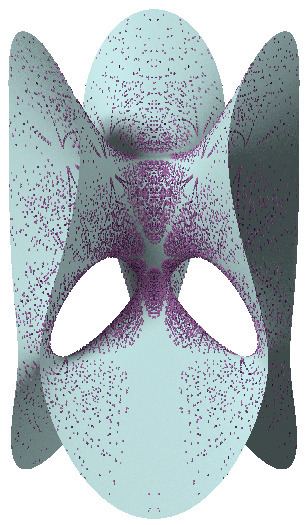 | ||
In mathematics, the Manin conjecture describes the conjectural distribution of rational points on an algebraic variety relative to a suitable height function. It was proposed by Yuri I. Manin and his collaborators in 1989 when they initiated a program with the aim of describing the distribution of rational points on suitable algebraic varieties.
Their main conjecture is as follows. Let
for
as
Manin's conjecture has been decided for special families of varieties, but is still open in general.
